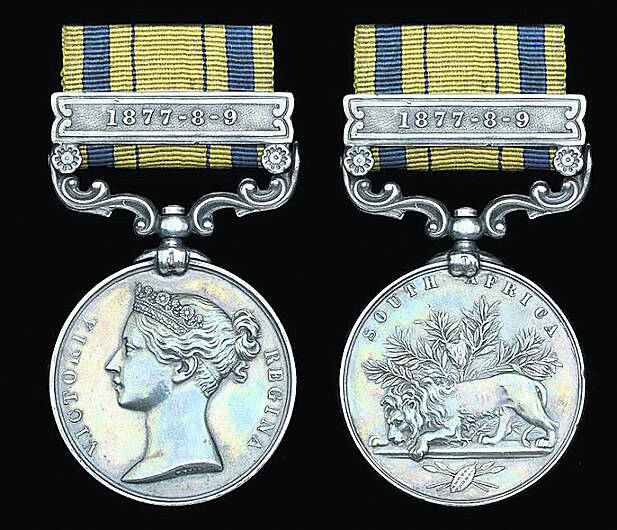On a sunny Wednesday morning back in 1879, Castlehaven’s Pte Michael Minihan of the 24th Regiment of Foot, was quietly preparing dinner with the rest of his 150 company members at a remote mission station called Rorke’s Drift, on the border of Natal and Zululand in South Africa.
By BRIAN MOORE
ON a sunny Wednesday morning back in 1879, Castlehaven’s Pte Michael Minihan of the 24th Regiment of Foot, was quietly preparing dinner with the rest of his 150 company members at a remote mission station called Rorke’s Drift, on the border of Natal and Zululand in South Africa.
At that very moment, just 44 miles away, another Irish soldier, Lt Nevill Coghill, was fighting for his life, with 1,200 other British troops, by the base of a rocky outcrop, at a place called Isandlwana.
Lt Nevill Coghill, also of the 24th Regiment of Foot, was born in Drumcondra, Dublin, but had connections to another West Cork family that lived a stone’s throw from where Michael Minihan grew up.
Nevill Coghill was the elder brother of Sir Egerton Coghill, who married Hildegard Somerville of Drishane House, Castletownshend.
Hildegard’s sister Edith was one of the famous duo, Somerville & Ross, who created the Irish RM collection of stories.
While both families may never have met, given their social standing in a Victorian West Cork, events over 9,000 miles away would soon leave one family grieving and another thanking God for their relative’s survival.
At Isandlwana, Lt Coghill and the rest of the 1,200 British troops woke that morning to the incredible sight of 15,000 (some say 24,000) Zulu warriors attacking the camp. Back at Rorke’s Drift, Michael Minihan and his comrades set about their day’s work building a wooden pontoon bridge across the Buffalo River, which was to be used to transport the tonnes of supplies needed by the British army as it set out on its conquest of Zululand.
It was about midday as Michael and the men were about to break for their meal when a lone rider came galloping in with the news that camp at Isandlwana was under attack. More mounted troops arrived, some severely wounded, and the afternoon brought more news of casualties at Isandlwana, a battle that was not going well for the British.
In fact, by the time this report reached Michael Minihan, Lt Coghill, his command, and every one of the 1,200 soldiers were already dead.
Nevill Coghill was posthumously awarded the Victora Cross for his bravery at Isandlwana. But on that day in 1879, Pte Minihan and the 150 men (some classed as ‘walking wounded) quickly realised that they would be next to face the Zulus. And they did. Over 5,000 fresh Zulu warriors soon appeared and began what was to be an almost continuous 12 hours of vicious fighting.
When the smoke cleared, Michael Minihan had not only survived, he was unwounded as well. Unlike their comrades at Isandlwana, of the 150 men defending Rorke’s Drift, just 31 were killed or wounded.
For the Zulus, however, it is estimated that over 1,000 warriors were killed.
Michael Minihan was also decorated for his valour at Rorke’s Drift, and it was these medals that fetched stg£70,000 at an auction in London recently.
Meanwhile, at another auction, within days of Pte Minihan’s medals being sold, the Coghill family put a selection of books, unpublished manuscripts and paintings by Edith Somerville up for sale in the Gresham Hotel in Dublin.
It seems the faiths have conspired to link the two soldiers once more.









